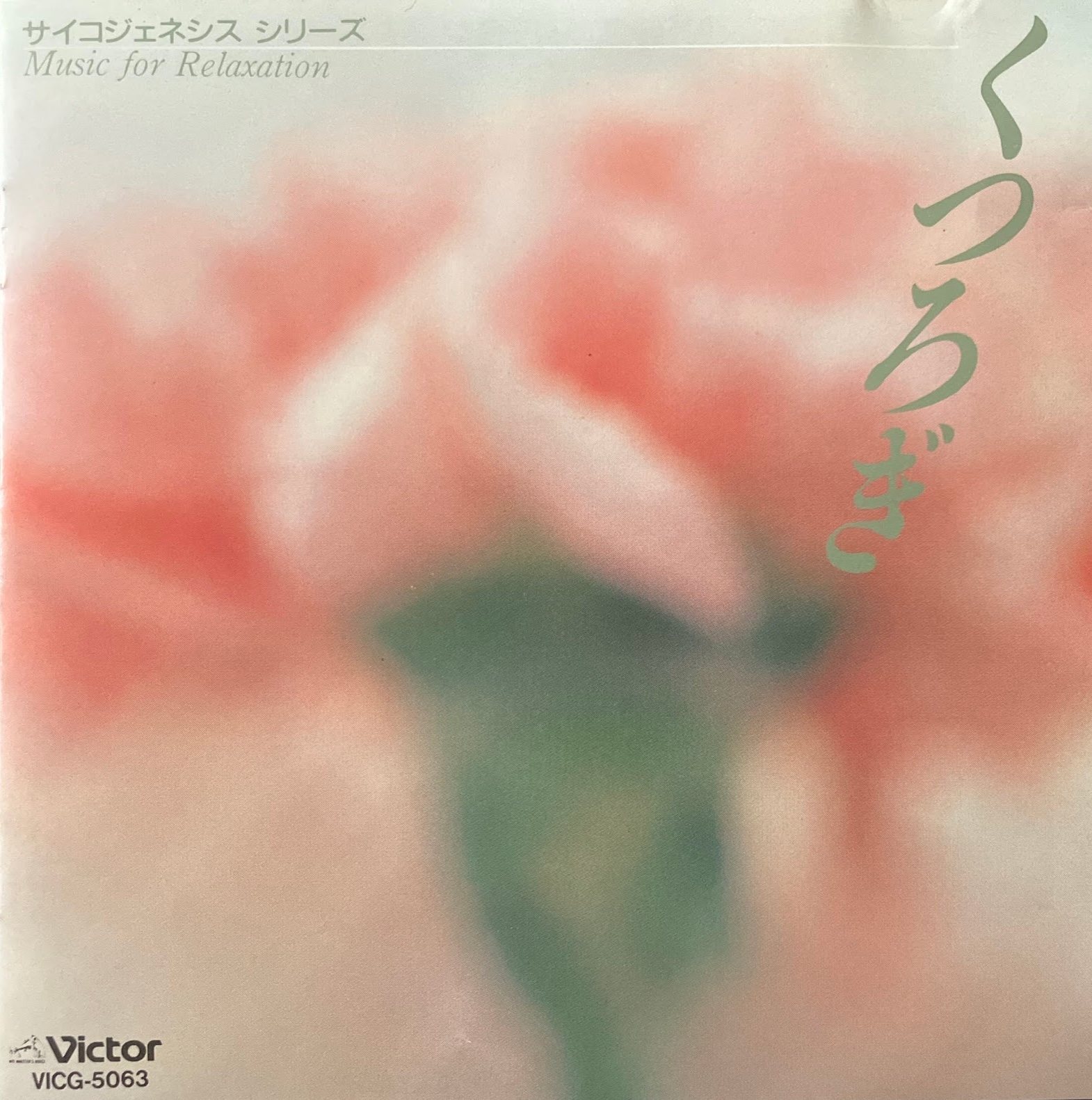There’s a fine line between background music and background music. It’s something that’s easier to hear than explain. And one way to do so, is to introduce you to the melodious environmental music of Kyoji Ohno and specifically, his, Kutsurogi (サイコジェネシス・シリーズ くつろぎ) .
Kyoji Ohno was born on July 24, 1959, in Tokyo, but grew up in New York (from 1968 to 1973). It was in America where started playing the piano at age 5, and (if you can believe his bio) began composing at age 9 (!). By the time Kyohi was 16 he was already back in Japan graduating from Seikei University’s engineering program, entering into the field of music synthesizer technology.

It was while spending time in New York, that Kyoji self-produced and self-released a relaxation tape dubbed: Discoveries In Nature, that was broadcast on American New Age FM stations like “NewSounds” and “Hearts of Space,” endearing himself to its audiences.
Kyoji’s career as a sound creator took a significant turn in the ‘80s when he joined Japan’s Victor Sound Systems, where he specialized in environmental music and music therapy. His collaborative work with British video artist Susan Derges (the groundbreaking camera-less photographer), the environmental video “Kimatika,” was featured in the Hara Museum Video Library and selected for the Japan Technology Art Exhibition. From the beginning, Kyoji understood how to marry a love for visual media with auditory music.
As a music director at Victor Sound Systems, Ohno conducted groundbreaking music therapy experiments at the National Sakura Hospital. He produced and sold exercise tapes and relaxation tapes through special sales routes, catering to esthetic clubs and fitness enthusiasts. His theme music for the Music Sports Festival, organized by the Japan Sports Club Association, and the creation of required contest pieces further showcased this versatility.
In 1990, Ohno’s spirit to innovate came through with the release of his, Psychogenesis series, a collection of ambient music which aimed to leverage 3D audio imaging to create unique auditory experiences that could help others meditate, “awaken”, gain self-confidence, and acquire therapeutic treatment (of some sort) through his music.

What makes Kutsurogi (サイコジェネシス・シリーズ くつろぎ) so impressive is just how much it stands out from the rest of what released in the series. Unlike the rest of the CDs, Kutsurogi was meant to be heard purely as music. In a way, this was Kyoji’s own musical ideas set to disc memory.
Subtitled: “Relaxation Music”, Kyoji asked the listener’s permission to be a bit selfish and indulge in music that connected, emotionally, with the peaceful rhythms of childhood and the warm embrace of nostalgia. The first four songs he’d ask for us to – if we’d be so inclined – to listen to in the morning and the final four in the evening. Any and all of that subliminal, auditory, noise, that stayed at lower frequencies before, would be shifted entirely to this music’s higher frequency bands.
In some interesting way, Kyoji was creating music that tried to work you on two mental levels: conscious and subconscious. Forget about creating music to doze off to – Kyoji wanted vibrant music to evoke something in your here and now.
On the “morning” side, you hear it in the album opener: “Sunset Behind The Darkness” a track that evokes pastoral Enoisms before segueing towards more tonal, melodic movements. The gorgeous introduction of largely acoustic instruments and acoustic-sounding tones on “Lost Forest” expand on the sparkly, hazy, relaxing ambient resonances Kutsurogi gives off. Kyoji, rightfully, ties the prettiness of his sonic choices with equally graceful melodies.
As mood-lifting music, songs like “Lost Forest” and “Hymn” traffic in ideas that use music to speak softer than words. On “Hymn” – at least to your fair writer’s ears – I hear the influence of styles I wouldn’t expect: that of folk rock and the blues. That the songs of Kutsurogi stick with you, is a testament to Kyoji’s great sense of crafting a tune (and yes, ambient music can be tuneful).
The “evening” side, which starts with “Short Story”, is truly its more wistful section. Here the introduction of more minimal music, that can build dramatically, foregrounds a more meditative side of Kyoji. A simple synth arpeggio cycling through all of “Wonderland” speaks easily to a nostalgic expression hoping to take you on some floating journey elsewhere, until Kyoji does so with truly sweeping atmospheric sonic interludes.
Hearing the orchestral flourishes in “Gem In The Black Silk” instantly remind me that Kyoji would go on to soundtrack myriad TV shows and movies. On this, his more personal statement, in the span of five minutes (give or take), what begins as a piano ballad ends as something more ephemeral and engaging. It’s that sentiment furthered on in “Scenes Of The Past” a song that takes the essence of centuries-old Japanese “healing music” and transmutes it to his own idea of relaxation.
On another record, many moons ago, I invited you to “live in that atmosphere”. Here the invitation is living all around you…or at least when it’s playing in your background…
FIND/DOWNLOAD
